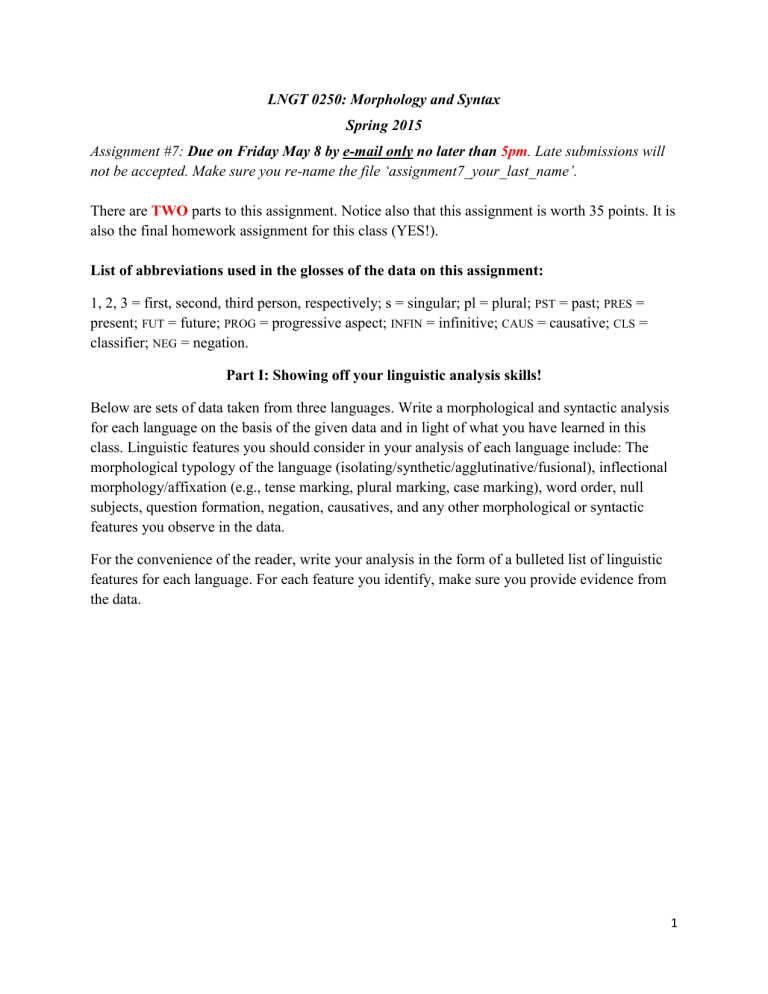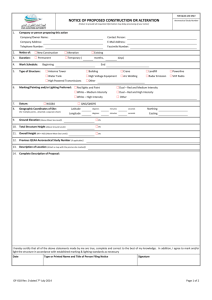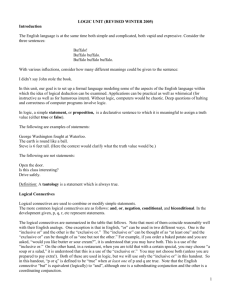LNGT 0250: Morphology and Syntax Spring 2015 Assignment #7

LNGT 0250: Morphology and Syntax
Spring 2015
Assignment #7: Due on Friday May 8 by e-mail only no later than 5pm . Late submissions will not be accepted. Make sure you re-name the file ‘assignment7_your_last_name’.
There are TWO parts to this assignment. Notice also that this assignment is worth 35 points. It is also the final homework assignment for this class (YES!).
List of abbreviations used in the glosses of the data on this assignment:
1, 2, 3 = first, second, third person, respectively; s = singular; pl = plural; PST = past; PRES = present; FUT = future; PROG = progressive aspect; INFIN = infinitive; CAUS = causative; CLS = classifier;
NEG
= negation.
Part I: Showing off your linguistic analysis skills!
Below are sets of data taken from three languages. Write a morphological and syntactic analysis for each language on the basis of the given data and in light of what you have learned in this class. Linguistic features you should consider in your analysis of each language include: The morphological typology of the language (isolating/synthetic/agglutinative/fusional), inflectional morphology/affixation (e.g., tense marking, plural marking, case marking), word order, null subjects, question formation, negation, causatives, and any other morphological or syntactic features you observe in the data.
For the convenience of the reader, write your analysis in the form of a bulleted list of linguistic features for each language. For each feature you identify, make sure you provide evidence from the data.
1
1. These are data from Language MO (10 points)
2
2. These are data from Language R (5 points)
3
3. These are two sets of data from language V . (10 points)
Note : The examples in each column are numbered 1-9. To avoid confusion when referring to a particular example, make sure you indicate if you are referring to an example from Column 1 or
Column 2. For example, you can say ‘In Example 8 in Column 2, we see that …’
Column 1 Column 2
4
Part II: Yes-No, the Welsh way! (taken from Tallerman (2011), but its inclusion here was inspired by a question from Sam in class) (10 points)
Do not worry about
PRED
in the gloss of example 2. It is not relevant to your answer of this exercise.
5
6
7











